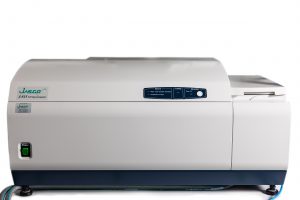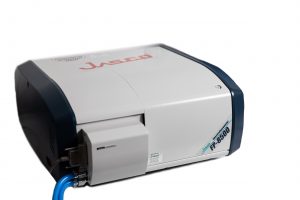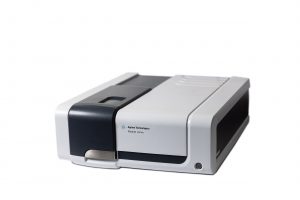Circular dichroism (CD) spectroscopy
Used for: probing the secondary structure of chiral macromolecules and assessment of conformational stability, structural changes and complex formation by measuring the differential absorption of left and right-handed circularly polarized light. CD is also commonly used for protein quality control.
Wavelength range of our Jasco J-815 instrument: 190-900 nm.
Sample requirements: 80 µl of 0.5-2 mg/ml of sample. Sample buffer should be compatible with CD measurements (buffer components absorbing in the region of interest should be avoided).
Jasco J-815 CD Spectrometer


